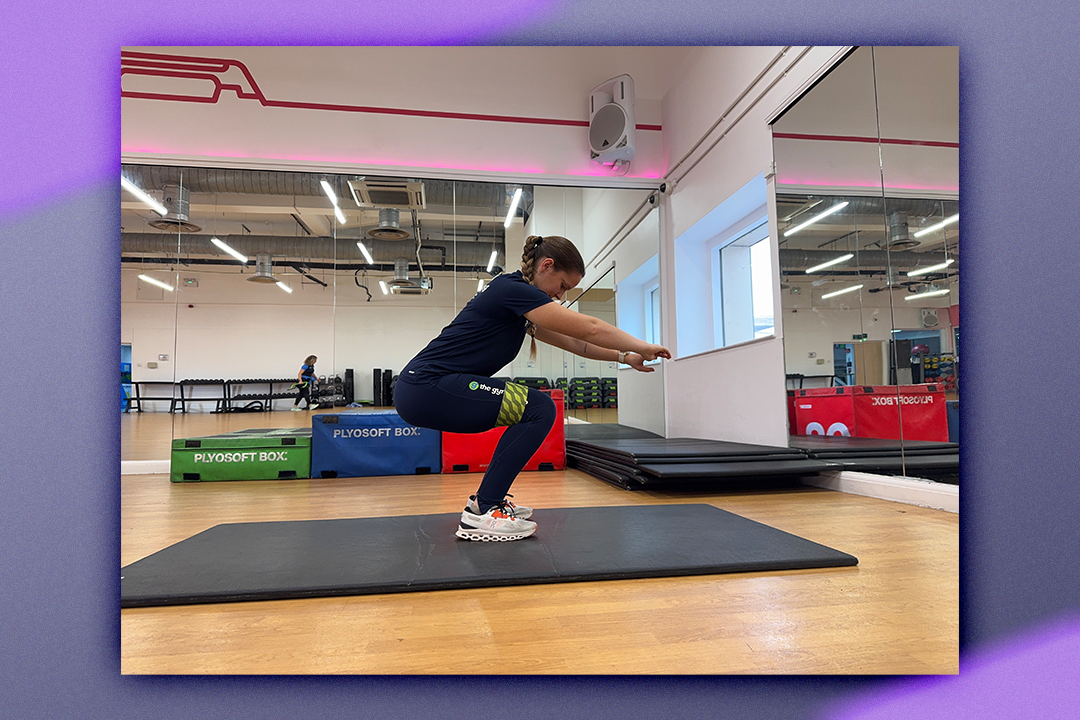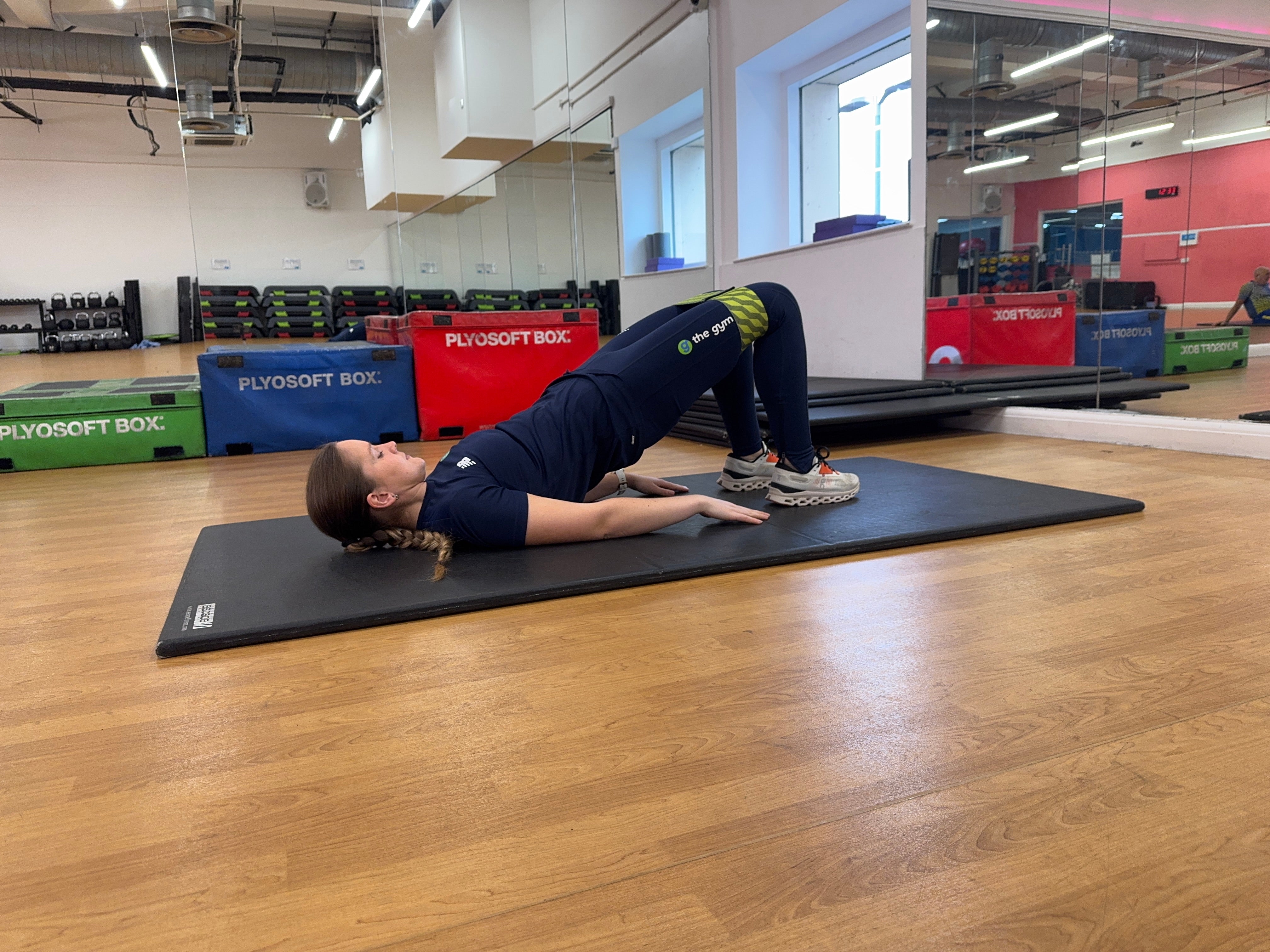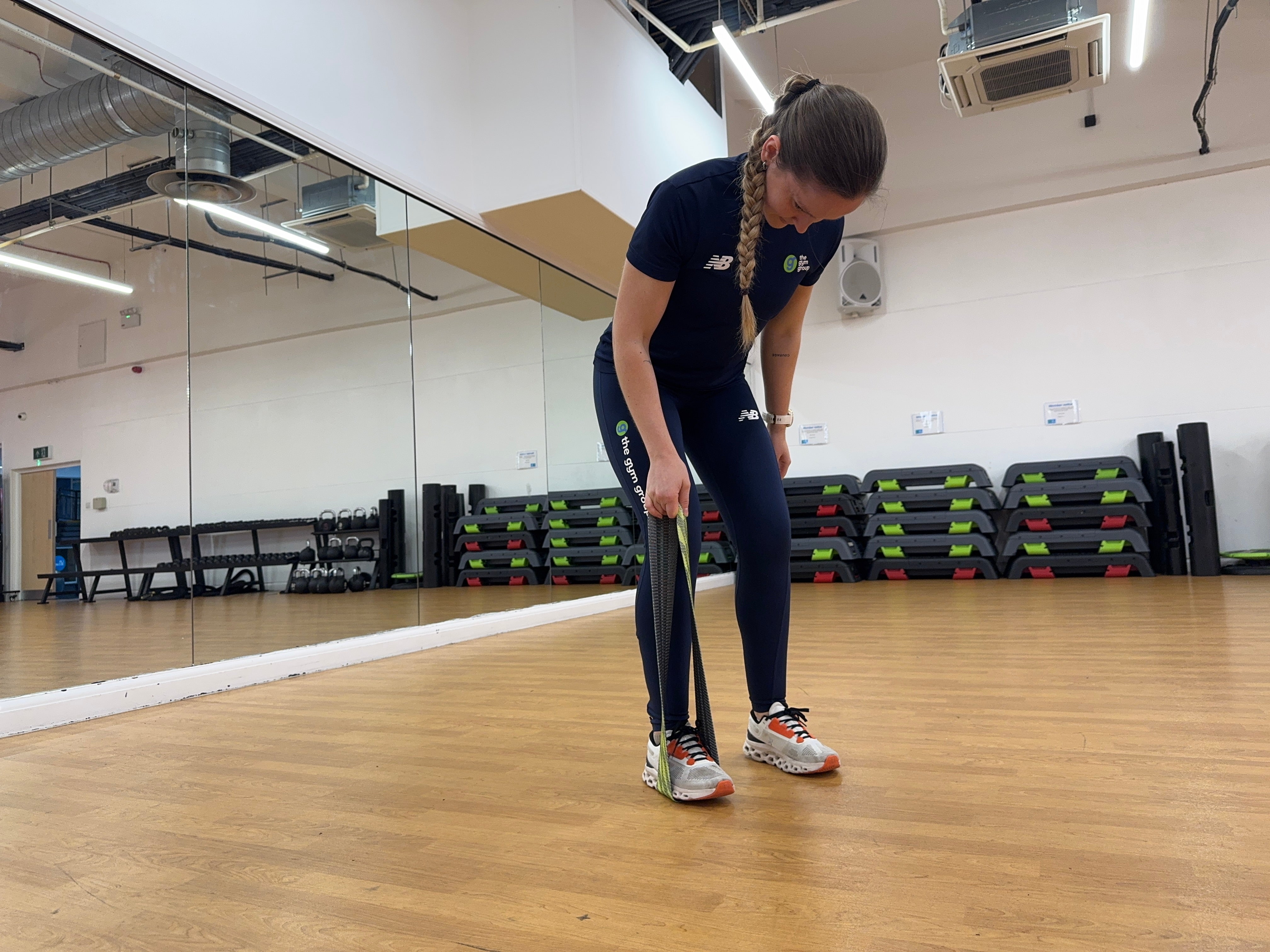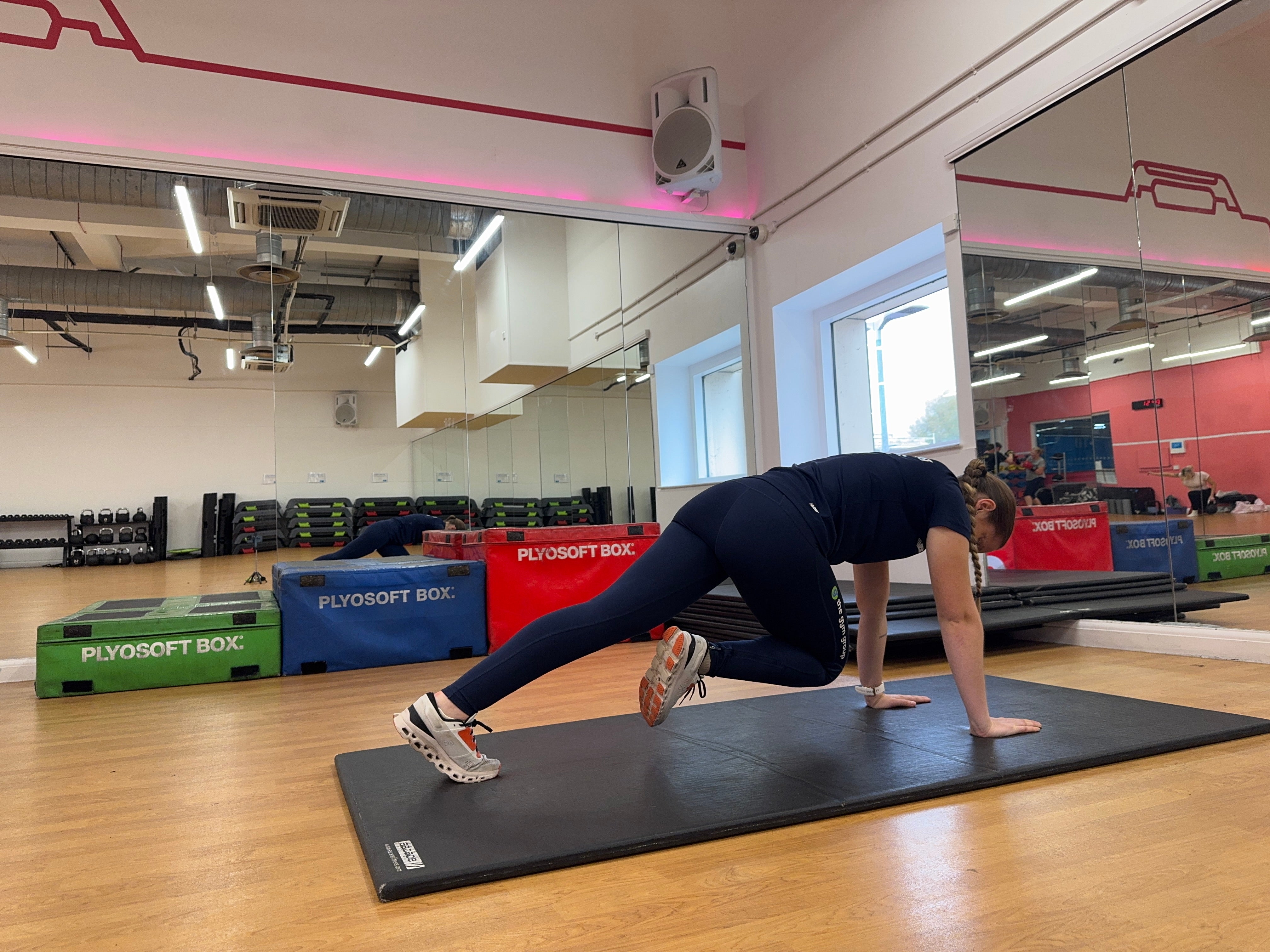You only need 18 minutes and a resistance band to try this trainer’s full-body uni halls workout
Home workouts can save you time and money – here’s a quick trainer-recommended session to try

Your support helps us to tell the story
From reproductive rights to climate change to Big Tech, The Independent is on the ground when the story is developing. Whether it's investigating the financials of Elon Musk's pro-Trump PAC or producing our latest documentary, 'The A Word', which shines a light on the American women fighting for reproductive rights, we know how important it is to parse out the facts from the messaging.
At such a critical moment in US history, we need reporters on the ground. Your donation allows us to keep sending journalists to speak to both sides of the story.
The Independent is trusted by Americans across the entire political spectrum. And unlike many other quality news outlets, we choose not to lock Americans out of our reporting and analysis with paywalls. We believe quality journalism should be available to everyone, paid for by those who can afford it.
Your support makes all the difference.Between studying, socialising and umpteen other commitments, finding the time and money to go to the gym at university can be tricky. Luckily, a trainer says there are ways you can stay in shape without paying a monthly membership fee.
“You really don’t need weights or fancy equipment for a full-body workout,” says Sasha Bridgen, a certified personal trainer and fitness manager at The Gym Group. Instead, with the right cocktail of bodyweight exercises and a budget training tool like a resistance band, you can enjoy a comprehensive session without leaving your uni halls.
Below, Bridgen shares a six-move circuit you can do in your bedroom with just a single short resistance band (£15, Myprotein.com). It only takes 18 minutes to complete and promises to train every major muscle group in your body, sans-gym, meaning you can work up a quick sweat during a study break and still have plenty of time to go out with your friends. Because life’s about balance, right?
How to do Sasha Bridgen’s uni halls resistance band workout
- Banded glute bridge with abduction
- Banded squat and pulse
- Banded shoulder external rotation
- Push-up
- Banded bent-over row
- Mountain climber
Complete the exercises listed above as a circuit. Perform each move for 45 seconds (or 25 seconds on each side, in the case of the single-arm bent-over row), rest for 15 seconds, then move on to the next one. Below, we’ve set three rounds as the target, but you can repeat this circuit as few or many times as you like depending on your preference, fitness level and the time you have available.
How to do each exercise
Banded glute bridge with abduction

Sets: 3 Work: 45 seconds Rest: 15 seconds
- Lie on your back with your feet planted on the floor roughly hip-width apart, your knees pointing upwards and the band looped around both legs, just above your knees.
- Push through your heels and squeeze your glutes to raise your hips until your body forms a straight line from your shoulders to your knees.
- Keeping your hips raised, push your knees out to either side.
- Slowly bring your knees together then lower your hips back to the floor.
- If you struggle with this, try starting without the band then add it in later as you grow stronger, Bridgen advises.
Banded squat and pulse

Sets: 3 Work: 45 seconds Rest: 15 seconds
- Stand upright with your feet roughly hip-width apart, your toes turned out slightly and a band looped around both legs, just above your knees.
- Push your hips back and bend your knees to lower into a squat. Lower yourself as far as you can while keeping your feet planted on the floor, your chest up and your spine long.
- When you hit this lowest position, drive through your heels to stand up about a quarter of the way, then lower yourself back down to the bottom of the squat.
- From here, drive through your heels to stand all the way back up.
Banded shoulder external rotation

Sets: 3 Work: 45 seconds Rest: 15 seconds
- Place a band around your wrists with your palms facing each other.
- Hold your elbows to your sides and your forearms straight out in front of you, parallel with the ground.
- Working against the band, move your hands away from each other, then allow them to return to the starting position. Your elbows should never move, and you should maintain a steady, constant and controlled pace throughout.
Push-up

Sets: 3 Work: 45 seconds Rest: 15 seconds
- Assume a high plank position, with your weight spread between your hands and your toes, your hands beneath your shoulders and your body forming a straight line from your head to your heels.
- Keeping your elbows fairly close to your sides, lower your chest down towards the floor.
- When your torso is a few centimetres from the floor, press through your hands to return to the starting position.
- Push-ups are tricky, so to make them easier you can place the band around both arms between your shoulders and elbow, or place your hands on a sturdy elevated surface like a bench or kitchen counter.
Banded bent-over row

Sets: 3 Work: 25 seconds on each side Rest: 10 seconds
- Stand with your feet hip-width apart and place the band around the middle of your right foot.
- Keeping your legs straight and your knees soft, hinge at the hips until your torso is roughly parallel with the floor, then grab one end of the band in your right hand.
- Drive your right elbow upwards to pull the band up as far as you can towards your hip, keeping your elbow close to your body.
- Control it back to the starting position, and switch to your left arm and leg after 25 seconds.
Cross-body mountain climber

Sets: 3 Work: 45 seconds Rest: 15 seconds
- Start in a high plank position with your hands underneath your shoulders and your weight spread between your hands and toes.
- Keeping your core engaged, drive your right knee towards your left elbow.
- Return your right leg to the starting position, then repeat on the other side by bringing your left knee towards your right elbow. Alternate the leg you move with each repetition.
- Start slowly, then build up the pace as you get more confident with the movement. Try to build to a speed where you’re running on the spot, and there’s a short period during each rep where neither foot is on the ground.
What are the benefits of this workout?
The movements in this workout are examples of strength training exercises, and this type of training holds the key to plenty of benefits.
“By adding regular strength training into your routine, you will increase muscle strength and tone, protect your joints from injury, improve heart health and help to manage your weight,” Bridgen explains. “I’m also a big advocate of moving to help your mental health, so would highly recommend increasing your movement levels to see benefits mentally as well as physically.”
By combining strength training exercises into a circuit, you’re able to access other positive impacts too.
“With this workout, you can hit all your major muscle groups with just a band,” says Bridgen. “And by moving through this circuit with minimal rest, you can raise your heart rate and build your fitness as well as progressing your strength.”
In other words, it serves up the same muscle, bone and joint-strengthening benefits of standard resistance training, alongside a side order of cardio perks to boost your heart and lung health, all in double-quick time.
How to progress this workout
Bridgen says you can repeat this workout as often as you like, encouraging beginners to introduce two or three weekly strength training sessions into their exercise plans – in line with NHS recommendations.
However, if you do repeat this workout, you’re going to need to make it more challenging over time to mirror your increasing strength and fitness levels. This is called progressive overload, and it’s essential for seeing continued progress in your training. To apply this principle, there are three main variables you can play with.
Resistance: “To add resistance, you could start by performing the movements with just your bodyweight, then add the band in when you feel comfortable,” says Bridgen. “You can also add weights over time, although there’s no need to go to a gym for this – think baked beans tins, books or bottles, which are three things every student should have lying around.”
Reps: “Once you’re used to performing the exercises for 45 seconds, you can also try increasing the time you’re working for to one minute or more,” Bridgen suggests. “Try to keep track of how many reps you complete each round so you can aim to improve on this next time you do the workout.”
Time under tension: “Another way to increase time under tension, or the amount of time your muscles are working for, is to slow down the movement,” Bridgen says. “For example, on the squat, try slowly counting to three while you lower your hips. Hold the bottom position for a second before the pulse, then slowly count to three again on the way back up.”
Three top tips for keeping fit at university
Make it a social activity
Movement in all its forms holds an array of mental and physical health benefits, whether you’re an avid gym-goer, regular runner or finding ways to walk 10,000 steps a day. Socialising is also going to boost your mood, so why not combine the two?
Bridgen says: “You could make it fun by grabbing some friends and going for a walk, completing this strength training circuit as a group, or join a running or sports club?”
Prioritise fruit, veg and protein
A nourishing diet lays the foundations for a successful exercise session, providing the fuel and nutrients your body needs to perform and make positive adaptations.
“Try to prioritise protein, fruits and vegetables,” Bridgen advises. “Batch cooking and meal prepping is a great way to get ahead for the week, and can be cheaper than buying food for one day at a time. Aim to drink two to three litres of water a day too, especially if you’re nursing a hangover every so often.”
Have fun with it
Consistency is pivotal to an effective exercise plan, and if you enjoy your workouts you’re going to keep coming back for more.
“Fitness is great as part of a balanced lifestyle but remember it should be adding to your life, not taking away from it,” says Bridgen. “If you can develop positive habits and build a healthy lifestyle now, it will stay with you for life.”
The resistance band to buy
Myprotein booty band bundle: £30, Myprotein.com
This Myprotein short resistance band set comes with three bands of varying resistance levels. So, you can choose the appropriate one to suit the exercise you’re doing, and apply progressive overload by using a more challenging band as you grow stronger.
Get 10% off almost everything with code MYPINDY (*T&Cs and exclusions apply).
Read more: Add this five-minute habit into your day to build full-body strength and boost your fitness




